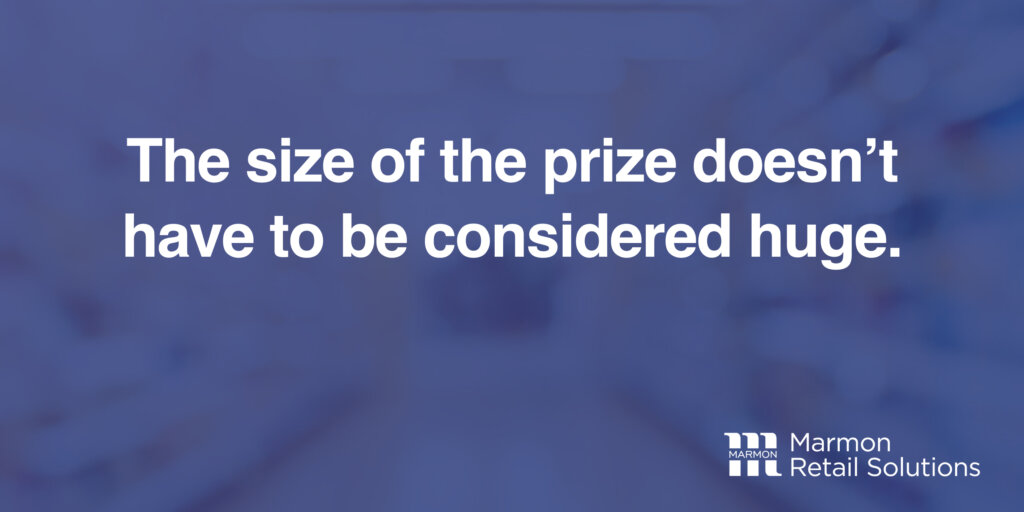Articles
4 Questions to Determine if Your Retail Innovation Is Pilot-Ready
These expert insights can help you decide which retail innovations are the most pilot-ready.

If your role includes leading retail innovation initiatives, then you know it can be challenging to evaluate which concepts are the most pilot-ready. After all, you likely have a variety of innovations in the pipeline. So what makes one more worthy to pilot than another?
“There’s both a science and an art to prioritizing your concepts,” says John Cloe, CEO at ProductivityONE, a consultancy firm specializing in retail optimization. The key is to put yourself in the shoes of key stakeholders. Does your innovation have what it takes to get a greenlight from them?
To answer that, we’ll explore four critical questions that can help you identify your most pilot-ready innovations.
1. Does your pilot have a strong why?
Before your concept is ready for piloting, you need to have a solid grasp of what’s driving the need for the innovation in the first place because that will affect how you go to market with it.
According to Cloe, the reason for an innovation typically falls into one of these two categories:
1. It will help you get caught up to your competition.
2. It will help you differentiate and distance yourself from the competition.
In turn, the innovation will likely have either a customer-oriented purpose or an efficiency-oriented purpose focused on reducing spending while improving store performance.
Cloe says when you’re confident you can effectively express the overall why behind a given innovation in terms of factors like the above, then it becomes a more viable option to push to the pilot stage.
2. Are you jumping the gun?
An innovation you’re proposing to pilot should already have some degree of buy-in at the C-suite-level. That means you may need to balance your enthusiasm for a given concept with practical and political realities.

“The concepts that already have C-suite buy-in are the low-hanging fruit when it comes to pilots,” Cloe says. “You may be passionate about some other innovation, but if it’s not even on the radar of upper level management, then pushing for a pilot is jumping the gun.”
Keeping this in mind will help you prioritize concepts more strategically. That can ultimately help you choose smarter and enable an innovation’s positive impact to be felt sooner.
3. Can you show “the juice is worth the squeeze?”
An innovation moves to the pilot stage so you can more accurately project its effectiveness. That said, you still need to meet a certain level of pre-pilot legitimacy by running the innovation through a proof of concept process and possibly some type of beta testing.

Cloe says those preliminary steps are what will help make your initial financial projections more meaningful and believable. “Buyers and executives are really trying to understand if the juice is worth the squeeze. You want to be sure that you’re clearly telling them what they want to know: How much is it going to make us, and how quickly will that happen?”
You also want to clarify the nature of the payoff. Is it a hard return? Is it going to drop money on the table right away? Or, is it a soft return that’s really more about gaining operational efficiencies than, say, increasing customer counts?

Cloe adds that the size of the prize doesn’t have to be considered huge. “If you can show that the innovation’s risk is relatively low, that the reward seems likely, and it’s for an area where you’ve been struggling, then you have a convincing case that a pilot is the next logical step.”
4. Can the innovation overcome the hurdles?
If you think you have a winning concept that should be moved to the pilot stage, then you’re confident you can prove its value. But you also need to consider how key stakeholders perceive the innovation’s actual implementation.
Innovating stores is an irregular event that requires reallocating or displacing time, resources, and, possibly, physical space. “In some cases,” says Cloe, “those factors can be seen as such a huge hurdle that it prevents key stakeholders from visualizing the end result.”
In fact, he adds that he’s seen his share of innovation concepts wither on the vine because of this. “If the sentiment from above is, ‘We just don’t think we can make it happen,’ then it probably means they’re willing to live with the status quo for the foreseeable future rather than take on the innovation’s risks.”
In situations like these, Cloe says it’s best to reprioritize your options and keep moving ahead with other possibilities.
Don’t Forget This Quintessential Factor for Innovating
Higher retail prices, a tight labor market, and fierce competition are making it crucial for retailers to innovate their stores strategically. You’ve just seen some key insights from retail optimization expert John Cloe to help you evaluate whether an innovation is pilot-ready.
But another important factor that can help you innovate more effectively is the quality of the vendors you work with. Ask yourself: Do they go on site to better understand your unique store challenges? Do they bring helpful expertise and industry connections that go beyond the product itself? Are they interested in a partnership for your long-term success?
If you’d like to gain an edge as you consider store innovations, Marmon Retail Solutions and its family of retail-focused brands can help. We provide integrated retail products and services that enable your innovations to be more strategic, more cost-effective, and ultimately more successful.
Learn more about how these retail solutions can work for you.